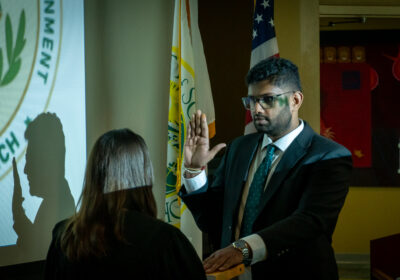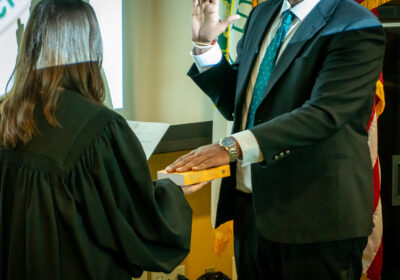USF study investigates long-termconcussion effects on football players
Football players who receive punishing hits on the gridiron often experience more than bumps and bruises.
For the nearly 1.2 million high school students who play football throughout the U.S., concussions have become an accepted part of the game.
However, at the beginning of the football season, USF researchers began studying the effects of these dangerous hits on the brain, said Gianluca Del Rossi, director of the USF Concussion Center.
“Our main interest is to find out if the accumulation of all the hits that occur during practices and games per season can cause any deficits in brain function,” he said. “We know that big hits do, but can the collection of those minor hits be as problematic?”
To conduct the study, Del Rossi is collaborating with two other USF researcers: Yael Arbel, an associate professor in the Department of Communication Sciences and Disorders, and Emanuel Donchin, a professor in the Department of Psychology.
“We’ve fitted these athletes’ helmets with a device inside that is capable of detecting various details related to the impact such as the severity, the location and the time of impact,” Del Rossi said. “We hope to have this study run throughout the remainder of the football season.”
This pilot study is following seven volunteer subjects that play football at Berkeley Prep, a local Tampa high school. After each practice and game, the players go to a psychology lab to have EEG readings that record brain activity as they perform various tasks.
“We collected some base information and will end the study by conducting a final test at the end of the season – maybe even several months after the season,” Del Rossi said. “We can figure out any changes and try to relate them to impacts and their severity. We’ll also see if their EEG readings eventually go back to normal with time.”
Del Rossi said much research has been conducted on concussions, which are a growing concern in all levels of football.
“But the area of more minor ‘sub-concussive’ impacts is lacking,” he said. “We need to know if they’re as benign as we thought all along.”
The researchers hope to use the pilot study data to fund research on a larger scale, with USF football players, for example.
USF freshman wide receiver Steven Bravo-Brown said he has never suffered a concussion from playing football.
He said he would not take part in such a study because he would worry about having an unknown device in his helmet.
“Personally, I probably wouldn’t volunteer (for the study) because even though I know the device wouldn’t affect me, I want to keep my helmet clear,” he said. “But I know other players really would be curious and would be willing to participate.”
Del Rossi said he thinks the results of these studies could lead to useful limits, such as a base number of hits allowed during practices, where the most injuries occur, or in games.
He wants to wait until the end of the season to analyze the data so they can have a broader scope of the results.
“We want to make sure that our athletes are staying safe,” Del Rossi said. “Here is something that kids participate in to have fun with and learn from, but they could be endangering their lives. So many of these injuries go unreported. We just want to help eliminate that risk.”






